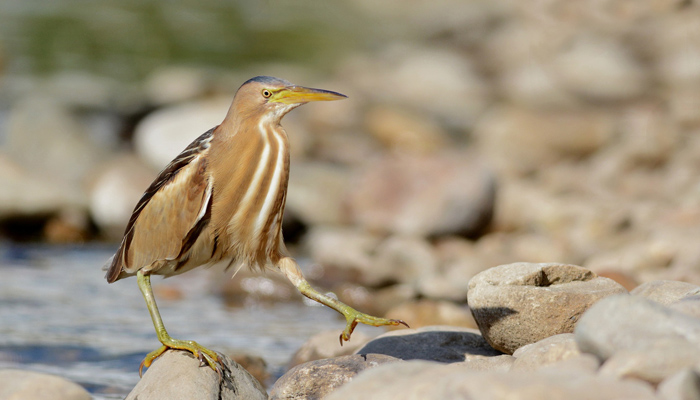
English: Little Bittern, Australian Bittern, New Zealand Little
Bittern
Russian: Малая выпь
German: Zwergdommel
French: Blongios
nain
Mongolian: Бичил одойбух
Japanese:ヒメヨシゴイ(Hime-yoshigoi)
Body
length: 33-38 cm
Wing
span: 49-58 cm
Status: Rare Species. According to the IUCN Red List Categories and criteria,
the species evaluated as – Near Threatened.
Distribution and Range in Mongolia: Breeds in Khar-Us, Khar, Khyrgas, Airag lake, Khovd river. On
Migration passage the species occur at the Uvs lake, Tes river basin, Khalkh,
Degee, Nomrog, Azarga, Galdastai rivers and the Buir, Khonkhor, and Tashgain
Tavan Nuur lakesvalleys. Singular migrants were recorded in Udleg of Batsumber
in Tov Aimag, some oases and steppes.
Habitat: Breeds in extensive or small reedbeds, overgrown reedy
ponds, ditches.
Summer visitor; winters in Africa. Rare vagrant in Britain & Ireland. Food
fish, frogs, insects. Nest a platform of reeds often raised above water-level
in reedbeds or bushes.
Identification: Very
small heron; smaller than a Moorhen. Secretive, but not infrequently comes to
feed at edges reedbeds etc; often retreats by climbing and running like a crake
rather than flying. In flight, quick jerky wingbeats distinctive, and creamy
wing patches unmistakable on adults, less clear-cut on juveniles.
- Adult ♂: Crown upperparts black; wing patch
buff-white, neat, contrasting.
- Adult ♀:
Black parts of ♂ are brown; wing patch buff-brown, unstreaked but less
contrasting.
- Juvenile:
like dull ♀ with streaked neck, upperparts and wing patch.
Population and threats: There is no detailed information on population. Threats: increase
in livestock numbers, dessiccation of water sources and wetlands due to global
warming, aridification and pastureland degradation lead to loss of habitat;
additional threats: increased water pollution impacted by the Dorgon and
Taishir Hydroelectric power stations; loss of food due to net fishing in large
lakes; Avain flu; predation by wolves, dogs and raccoons.
Conservation Measures: Included as Rare animal in the Annex to the Mongolian Government
Resolution #7 (2012). The nesting and migration path areas like lakes Khar-Us,
Airag and Buir included in the Ramsar Convention and partially covered by
NSPAN.
Further actions: Improve the conservation management for birds nesting within the
NSPAN, conduct monitoring projects on a regional scale, study the species
reproductive biology, migration path, threats, and raise awareness.